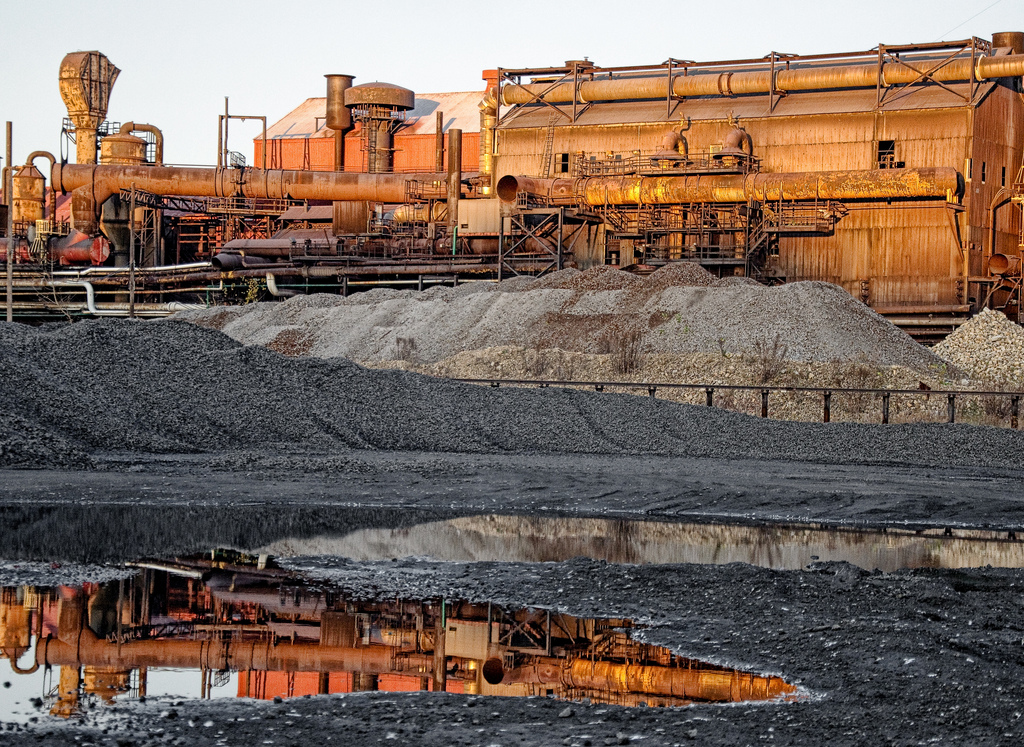By Meredith Wilson
While manufacturing in the Midwest isn’t going to disappear, a recovery of the industry won’t happen without innovation, according to business leaders and experts speaking at the Society of American Business Editors and Writers conference Friday.
Rust Belt manufacturing, which has been declining sharply since the 1980s, is beginning to show signs of growth, said Erica Groshen, commissioner for the Bureau of Labor Statistics. After hitting a low point during the Great Recession, manufacturing jobs in the Midwest have mirrored or exceeded the overall recovery across the country, she said.
Manufacturing employment in Michigan, for example, increased 32.8 percent from its low point in June 2009 to December 2014. National manufacturing employment rose 7 percent from its low point in October 2010 to December 2014, the most recent measurement.
Metal fabrication, machinery and transportation equipment, all durable goods and staples of the manufacturing industry, have seen the strongest gains, Groshen said. However, these gains have not been enough to make up for Recession-era job losses.

A simpler term for this process, said Groshen, is outsourcing.
The American economy depends on manufacturing, according to Bill Lovejoy, a professor of business administration at the University of Michigan. Manufacturing accounted for 13 percent of American GDP in 2012, compared with 17 percent in 1997, according to the World Bank.
“If the Rust Belt has no future, America has no future,” he said. “There’s no such thing as a service-based or information-based economy. If you’re not making cool stuff people want, America is going to lose out, not just the Rust Belt.”
William King, chief technology officer at the Digital Manufacturing and Design Innovation Institute in Chicago, sees a split occurring in the manufacturing landscape. Eighty percent of producers are “racing to the bottom,” focusing on “deeply-commodified goods,” while the remaining 20 percent are producing “high-margin, high information content, high knowledge content manufactured goods,” he said. It’s the 20 percent that is key to success for American manufacturers, he said.

“Will the Rust Belt win? I think a better question is ‘Who will win?’” he said. “The answer is the firms and the regions who will win are those regions that have a workforce that’s capable of meeting that new knowledge manufacturing industry.”
Rust Belt manufacturing should fight to be competitive in all markets, not just high-end markets, Lovejoy said.
“I think it’s dangerous to be seduced into leaving the nitty-gritty stuff behind and escape to some pristine world of high margins,” he said. “You don’t want a situation where you think hybrid, you think Japanese. You don’t want a situation where the cool electric car is being made in California.”
Instead, Lovejoy wants to see more efficient research and design in order to jumpstart Midwestern manufacturing. The research is being done but companies haven’t been able to commercialize it, he said.
Onshoring, or the process of bringing manufacturing jobs back to the United States, will help spur the innovation that the industry needs, King said. Designers and manufacturers have been separated for so long that there is a communication breakdown, which adds costs to production and slows innovation, he said.
The Bureau of Labor Statistics estimates that the number of production jobs in the Rust Belt will continue to increase. Indiana should gain 26, 160 jobs between 2012 and 2022, and Illinois should gain 21,046 during that period.
People will always need tangible products, Lovejoy said.
“Air BnB’s worthless without apartments,” he said. “Uber’s worthless without cars. We will have a smart car, but it will be a smart car, not a smart.”
But when asked if he was optimistic or pessimistic about the future of manufacturing in the Rust Belt, Lovejoy paused. He expressed concern about the Midwest’s competitive position, citing a history of “myopic thinking” in the industry.
“It’s a necessity, so I have to be optimistic, because the converse is unacceptable,” he said.

